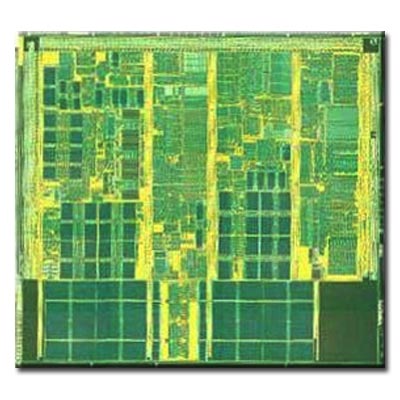AMD Athlon XP/MP (Palomino) processors
Introduction: October 2001
Overview
Athlon was the brand name applied to a series of different x86 processors designed and manufactured by AMD. The original Athlon, or Athlon Classic, was the first seventh-generation x86 processor and, in a first, retained the initial performance lead it had over Intel's competing processors for a significant period of time. AMD had continued the Athlon name with the Athlon 64, an eighth-generation processor featuring AMD64 (later renamed x86-64) technology.
Athlon was the ancient Greek word for "Champion/trophy of the games", and made its debut on June 23, 1999.
The Palomino core
AMD released the third major Athlon version on October 9, 2001, code-named "Palomino". This version, the first to include the full SSE instruction set from the Intel Pentium III as well as AMD's 3DNow! Professional, was introduced at speeds between 1333 and 1533MHz, with ratings from 1500+ to 1800+. The major changes were optimizations to the core design to increase efficiency by roughly 10% over a Thunderbird at the same clock speed, through enhancement of the TLB architecture and the addition of a hardware data prefetch mechanism to better take advantage of available memory bandwidth. The new Athlon core was also more frugal with its electrical demands, consuming approximately 20% less power than its predecessor, and as such, reducing heat output comparatively as well. The core was also modified to improve clock speed scalability. At launch, Athlon XP allowed AMD to clearly take the x86 performance lead with the 1800+, and enhance the lead with the release of the 1600MHz 1900+ less than a month later.
The "Palomino" was first released as a mobile version, called the Mobile Athlon 4 (codenamed "Corvette"), after the fact that it was AMD's fourth core to be called Athlon (after the original K7, the 0.18 µm K75, and the Thunderbird), but many people noted that the name was most likely a jab at the then-brand-new Intel Pentium 4. The desktop Athlon XP followed a few months later, in October. The "XP" name is interpreted to mean eXtreme Performance and also as an allusion to the recent release of Windows XP.
"Palomino" core processors are most distinguishable from "Thoroughbred" and "Barton" model Athlon XPs in that the CPU die is square, whereas earlier (and later) cores are rectangular. The normally top-mounted capacitors were relocated to the underside as well, contrasting "Thunderbird". The "Palomino" Athlon XP CPUs also had their stepping information engraved on the core, similar to the "Thunderbird", as opposed to the label to the side of the core as in the "Thoroughbred" picture.
The Athlon XP was marketed using a PR rating system, which compared its performance to an Athlon Thunderbird. Because the Athlon XP had much higher IPC (instructions per clock) than the Pentium 4 (and about 10% higher than a Thunderbird), it was more efficient; it delivered the same level of performance at a significantly lower clock-speed. Also, unlike the earlier Athlons, this chip was available in a form that officially supported dual processing, known as Athlon MP.
Source: Wikipedia, the free encyclopedia.



